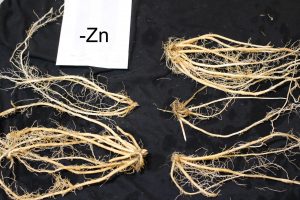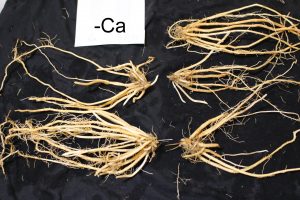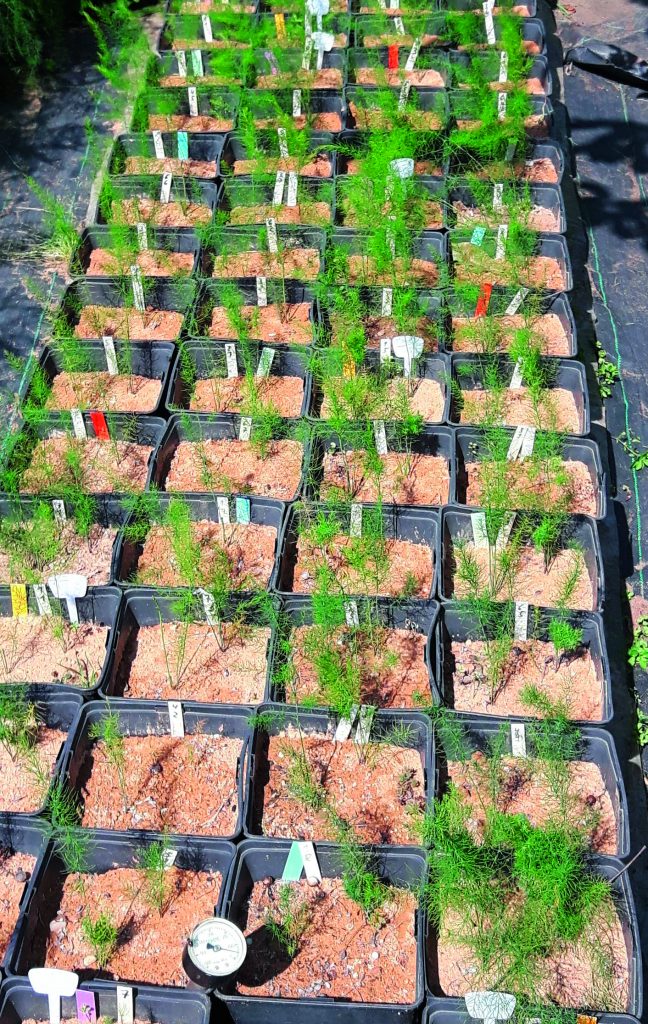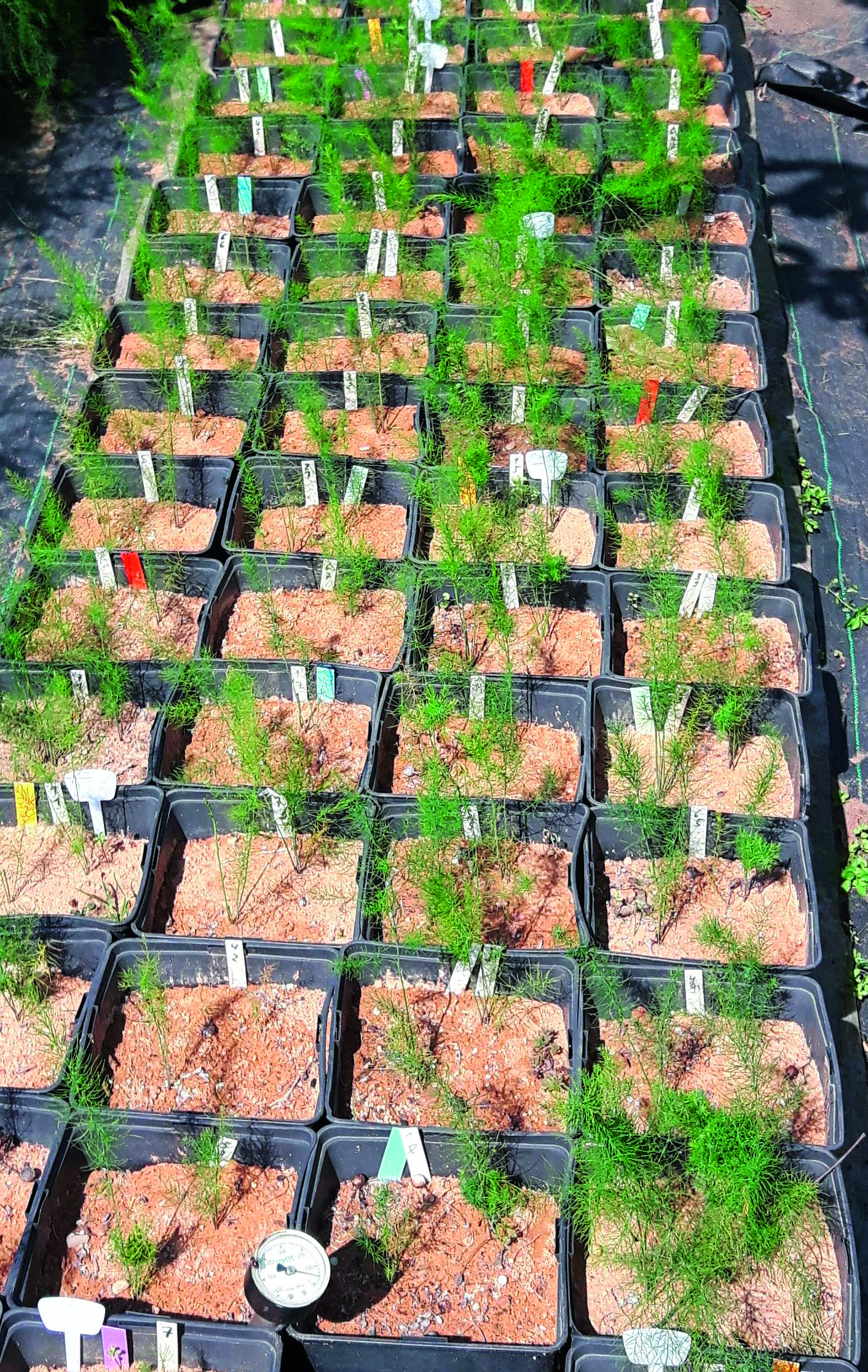Importance and interaction of nutrients in asparagus roots
Over the last few years several pot-based fertilising trials were conducted to investigate different aspects of fertiliser application in asparagus. One of these trials was designed with seedlings in sandy soil with different nutritional contents.
Trial design
The trial contained several groups of 5 randomly positioned 5.5l pots, each group having just one nutrient withheld (all macro minerals and most microminerals). As base material sandy subsoil of an existing asparagus field was analysed and then fertilised according to the trial design. 

Seedlings were produced in grow plates filled with upper sandy soil from the same field. Once seedlings had developed at least one stalk, two plants were transferred into each pot. Overhead irrigation occurred at -200hPa and an additional small amount of the macro minerals and boron was applied once in the summer. In autumn, the crowns were weighed, and the mineral status of the roots analysed. This was repeated over three consecutive years.
Results and discussion
The induced lack of nutrients was evident in the amount of crown mass in autumn. Some treatments did not differ from the control (e.g. without giving Mg or Mo), whereas other treatments showed significant reduction in root mass (e.g. without any fertiliser or P).
When a mineral was withheld from the plants, it translated to a reduced content in the root. For example, without giving nitrogen (“-N”), this group only contained 61 % of nitrogen compared to the average amount of all of the samples. The control group that received the whole spectrum of nutrients (“+all) was showing nearly 100% of each nutrient in the analysis. This indicates a close relationship between the soil and the root content, too – at least in the young stage of the asparagus plant.
Zinc was the only exception. Although lack of this mineral caused a significant reduction in root mass there was only a small decrease in root content. There could be two explanations. Firstly, plants that lacked zinc in the soil showed the biggest differences between root mass in this trial (data not presented). Individual plants
either grew normally or had significantly reduced growth (picture plants with lack Zn). Secondly, the data showed all groups had an overall low zinc content compared to other trials and high amounts of data from crop fields in praxis.
Additionally, calcium appears to be an especially important nutrient in asparagus. The relationship between fertilization and root content was closest in this trial with very young plants. Lack of calcium also caused a lack of many other minerals. Closer inspection of the roots revealed a reduction in fibrous roots which may decrease absorption of some other micronutrients (picture plants with lack Ca).
In conclusion
Although there were significant differences in the growth of the crowns and mineral content of the roots there were no visible symptoms in fern. Other trials with plugs or crown also showed similar results. This indicates that root tissue samples may be more useful for improving fertilisation strategies than fern.
The substantial differences in crown weight without visible differences in fern appearance in these various fertilisation strategies show that asparagus can have a significant “hidden hunger”. This also indicates that checking the nutrient status of asparagus roots during winter can be a useful tool for improving plant growth.
As other crops, asparagus shows some antagonism in the absorption of minerals. For example, manganese and calcium show that lack of one of these leads to better absorption of the other. This could be used to check the basic absorption potential of the immobile calcium in older plants.























